In 1883 the men’s clothing store Washer & August had been in business one year when an ad containing this poem appeared in the Fort Worth Gazette:

“They say that the suit I now am wearing
Is a marvel in neatness and fit,
And that Washer & August are the ‘bosses.’
And success must be theirs or they’ll quit.”
When “bosses” Jacob Washer and Leo August wrote that poem, they could not have foreseen just how much success the store they founded would enjoy before future owners quit.
Jacob Washer was born in Tennessee in 1853 and grew up in Memphis as one of nine siblings. He moved to Fort Worth from New York City in 1882 and went into business with Leo August.
Their first store was located at West 3rd and Houston streets.
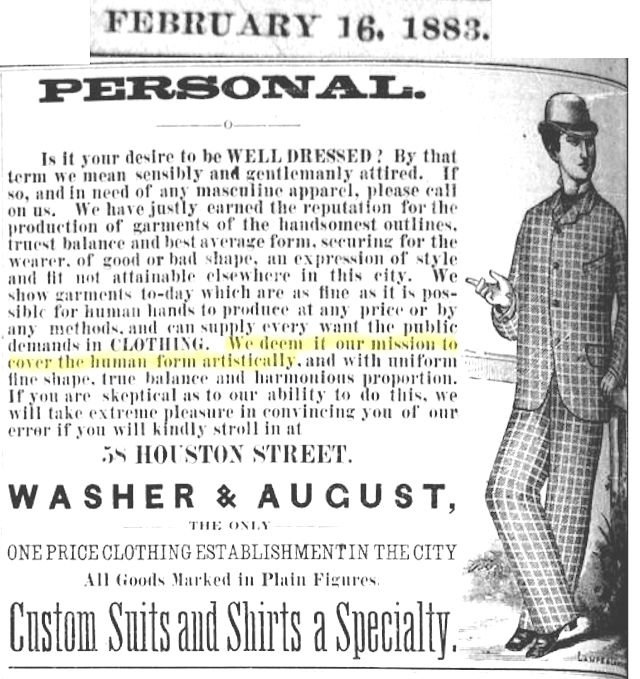 “We deem it our mission to cover the human form artistically.”
“We deem it our mission to cover the human form artistically.”
That checkered dandy notwithstanding, Washer & August didn’t cater to just city gents. Ranchers who came to town to sell their cattle shopped there for cowboys boots and woolen underwear.
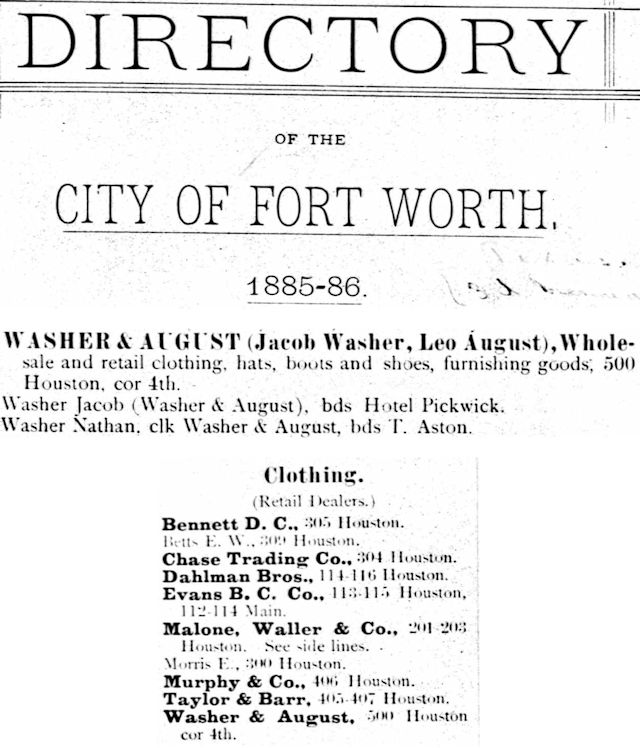 By 1885 the store was located at Houston and 4th streets, and Jacob’s younger brother Nathan was a clerk. Note that in 1885 every clothing store in the city directory was located along five blocks of Houston Street.
By 1885 the store was located at Houston and 4th streets, and Jacob’s younger brother Nathan was a clerk. Note that in 1885 every clothing store in the city directory was located along five blocks of Houston Street.
 The second Washer & August store was next to a roller rink.
The second Washer & August store was next to a roller rink.
 In 1886 Leo August left Washer & August to form L. August & Company with Leon Gross.
In 1886 Leo August left Washer & August to form L. August & Company with Leon Gross.
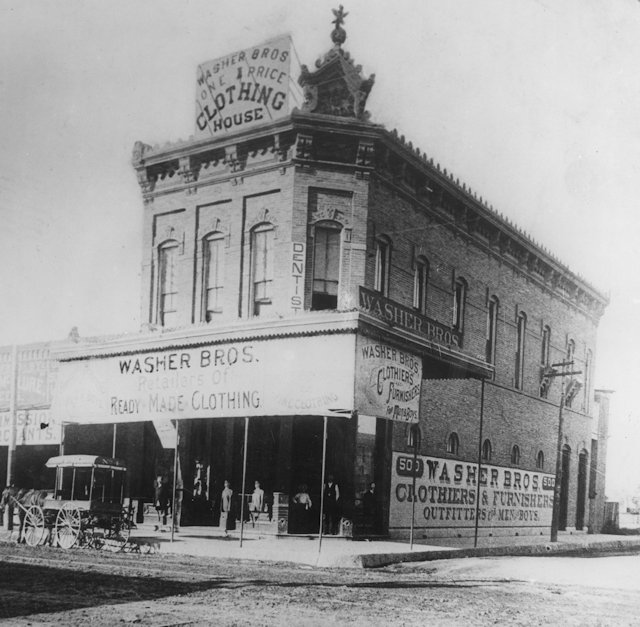
That year Jacob and Nathan founded Washer Brothers men’s clothing store. (1886 photo from Jack White Photograph Collection, University of Texas at Arlington Libraries.)
 In the 1888 city directory, note Sam Rosen, who began his career in Fort Worth as a peddler of tin goods and jewelry and then owned a clothing store before becoming a developer and civic leader on the North Side.
In the 1888 city directory, note Sam Rosen, who began his career in Fort Worth as a peddler of tin goods and jewelry and then owned a clothing store before becoming a developer and civic leader on the North Side.
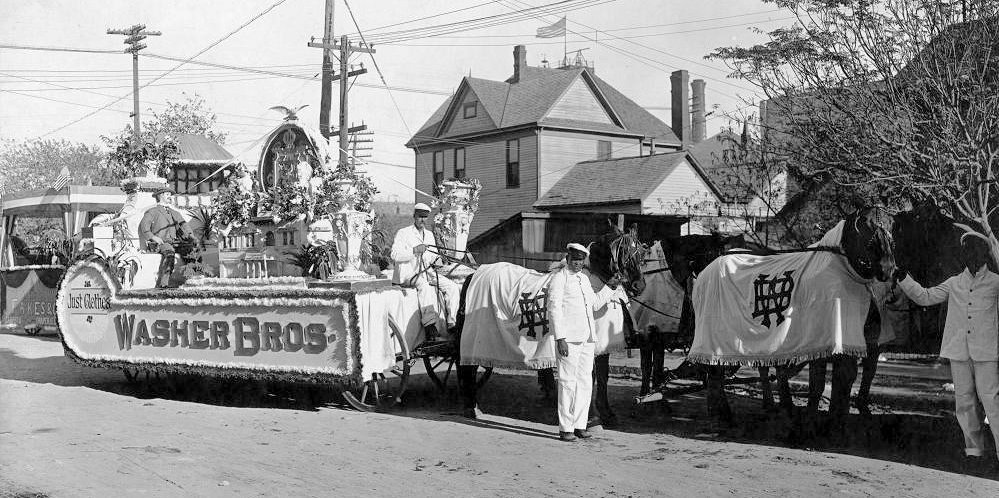 A Washer Brothers parade float about 1890. (Photo from University of Texas at Arlington Library.)
A Washer Brothers parade float about 1890. (Photo from University of Texas at Arlington Library.)
About 1891 Leon Gross left L. August & Company to join Washer Brothers. By 1895 he would be a partner. Like the Washers, Gross was from Memphis.
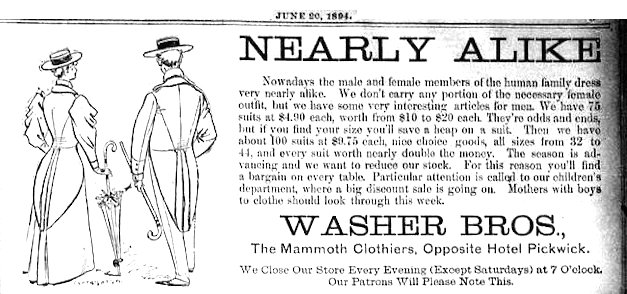 “Nowadays the male and female members of the human family dress very nearly alike.”
“Nowadays the male and female members of the human family dress very nearly alike.”
 In 1895 Washer Brothers made a pitch to “the laboring men of the city” by selling nested dinner pails at a discount.
In 1895 Washer Brothers made a pitch to “the laboring men of the city” by selling nested dinner pails at a discount.
About 1897 brother Nathan moved to San Antonio to manage a Washer Brothers store there. Nathan would become a San Antonio civic leader and serve as president of the state board of education.
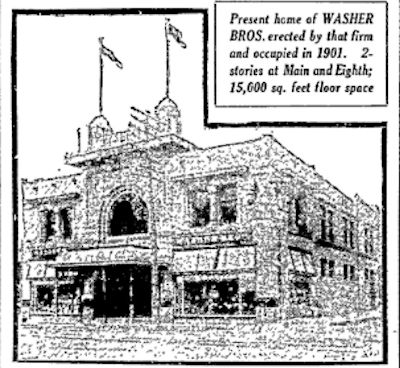 In 1901 the Washer brothers moved to their store to the corner of Main and West 8th streets, where capitalist Winfield Scott had built them a building. In 1901 that location was considered outside the central business district, and some observers were skeptical that the store could succeed.
In 1901 the Washer brothers moved to their store to the corner of Main and West 8th streets, where capitalist Winfield Scott had built them a building. In 1901 that location was considered outside the central business district, and some observers were skeptical that the store could succeed.
Four years later the store welcomed President Teddy Roosevelt, who was staying across the street at the Worth Hotel (another Scott property) while in town.
Roosevelt bought a Stetson hat and two shirts at the store.
 The next year Jacob Washer died at age fifty-three. He is buried in Emanuel Hebrew Rest Cemetery. (The quotation on the tombstone is from Shakespeare.) Leon Gross became president of Washer Brothers.
The next year Jacob Washer died at age fifty-three. He is buried in Emanuel Hebrew Rest Cemetery. (The quotation on the tombstone is from Shakespeare.) Leon Gross became president of Washer Brothers.
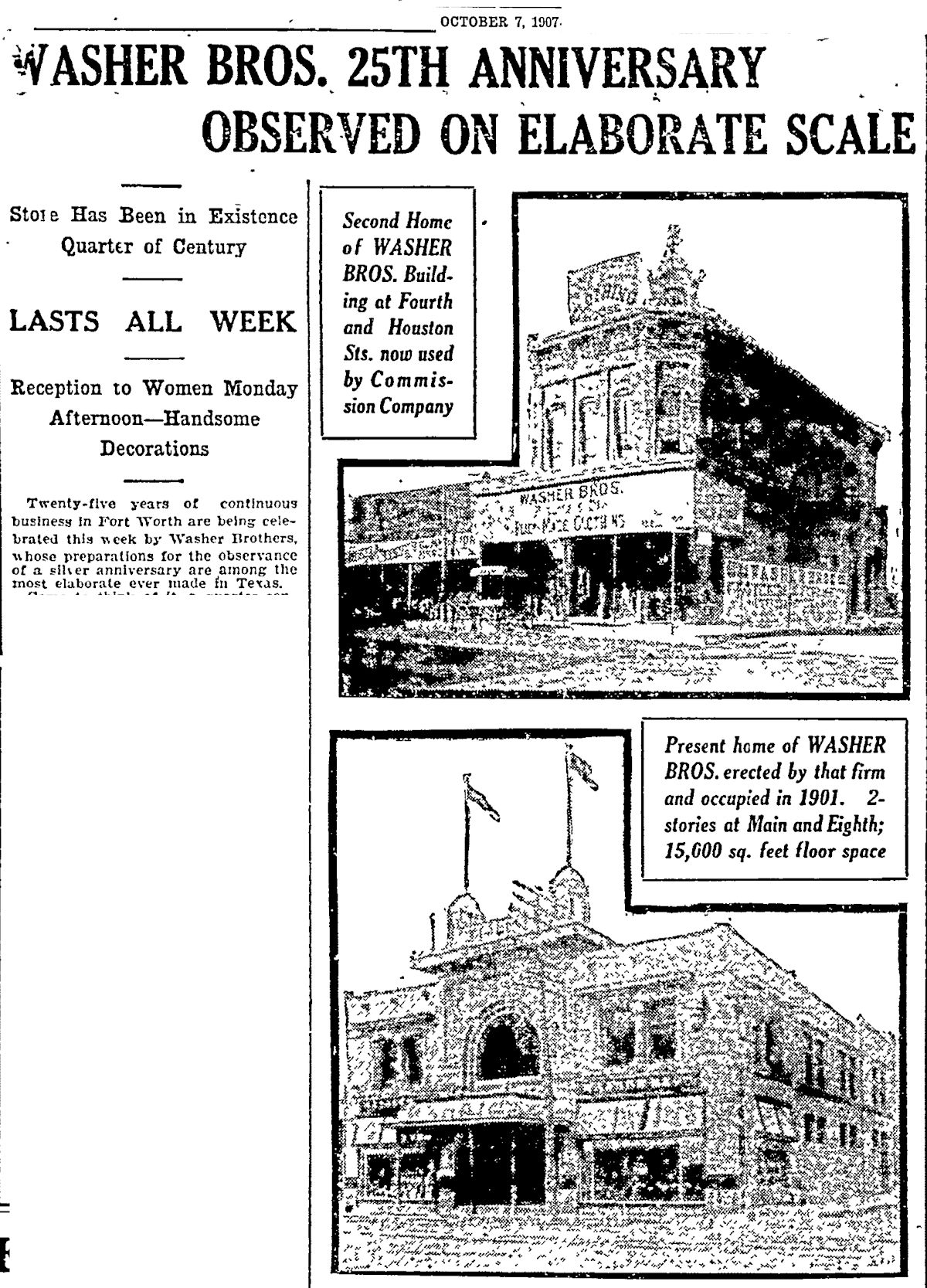 In 1907 the store celebrated its twenty-fifth anniversary. It now had thirty-five employees, claimed to be the largest men’s clothing store in Texas.
In 1907 the store celebrated its twenty-fifth anniversary. It now had thirty-five employees, claimed to be the largest men’s clothing store in Texas.
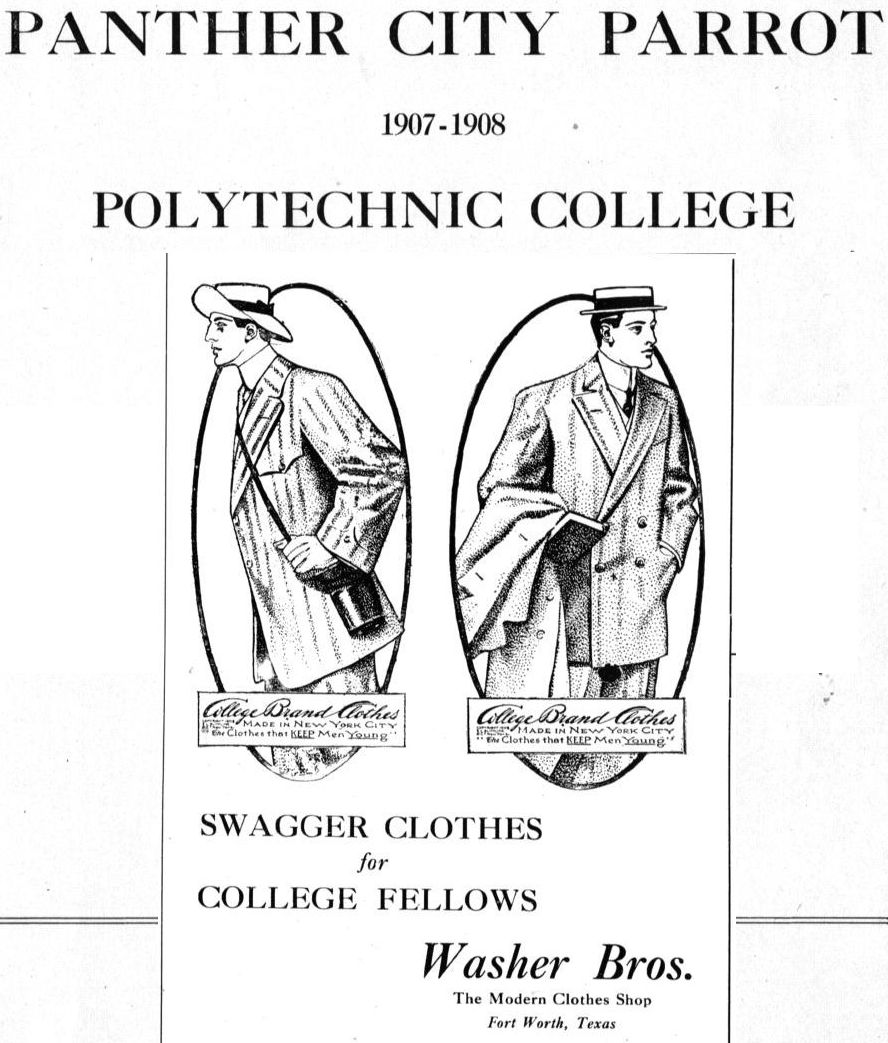 An ad in the 1908 yearbook of Polytechnic College.
An ad in the 1908 yearbook of Polytechnic College.
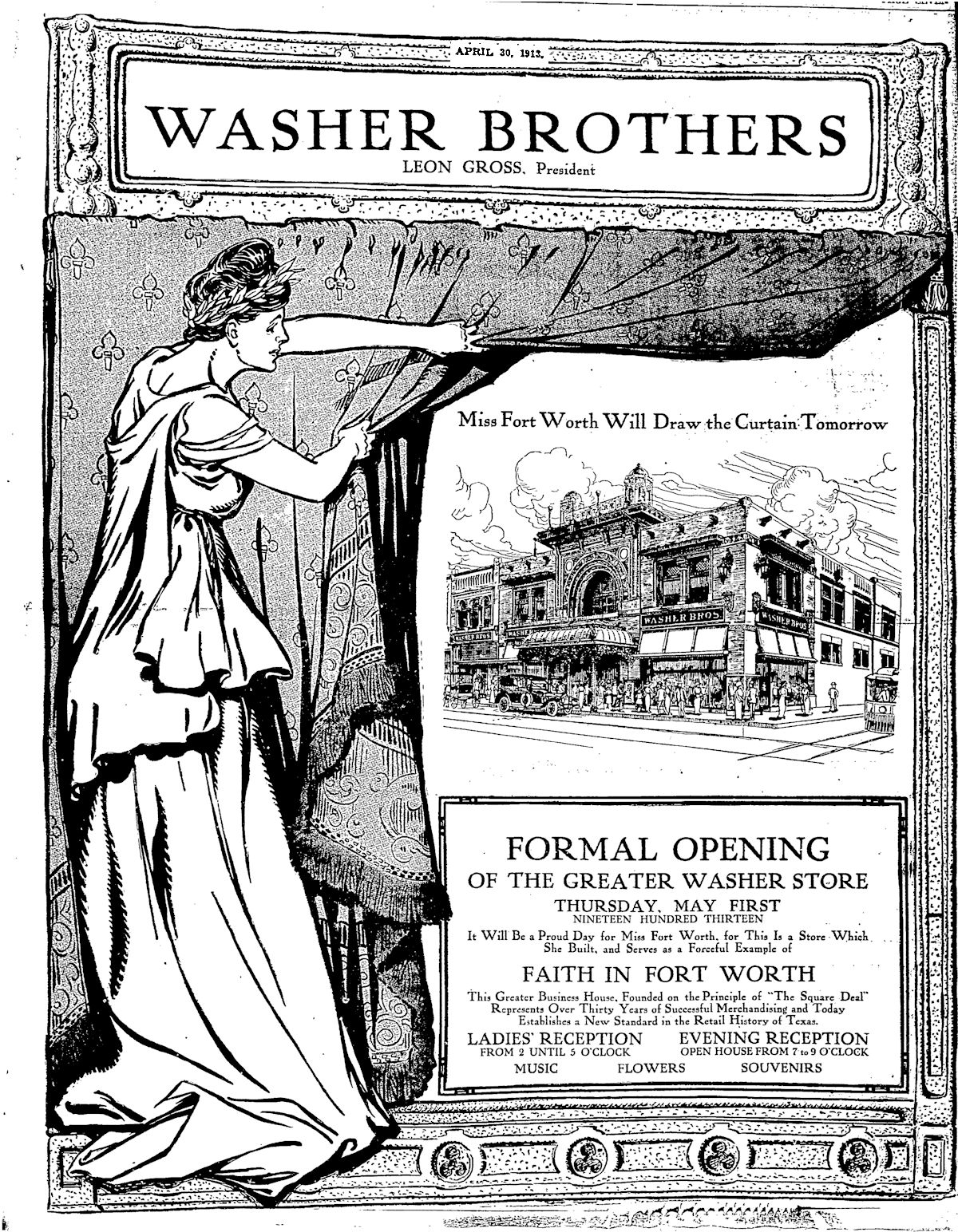 In 1913 the store was expanded and remodeled.
In 1913 the store was expanded and remodeled.
 At Christmastime that year Washer Brothers participated in the shortlived SPUG (Society for the Prevention of Useless Giving) movement.
At Christmastime that year Washer Brothers participated in the shortlived SPUG (Society for the Prevention of Useless Giving) movement.
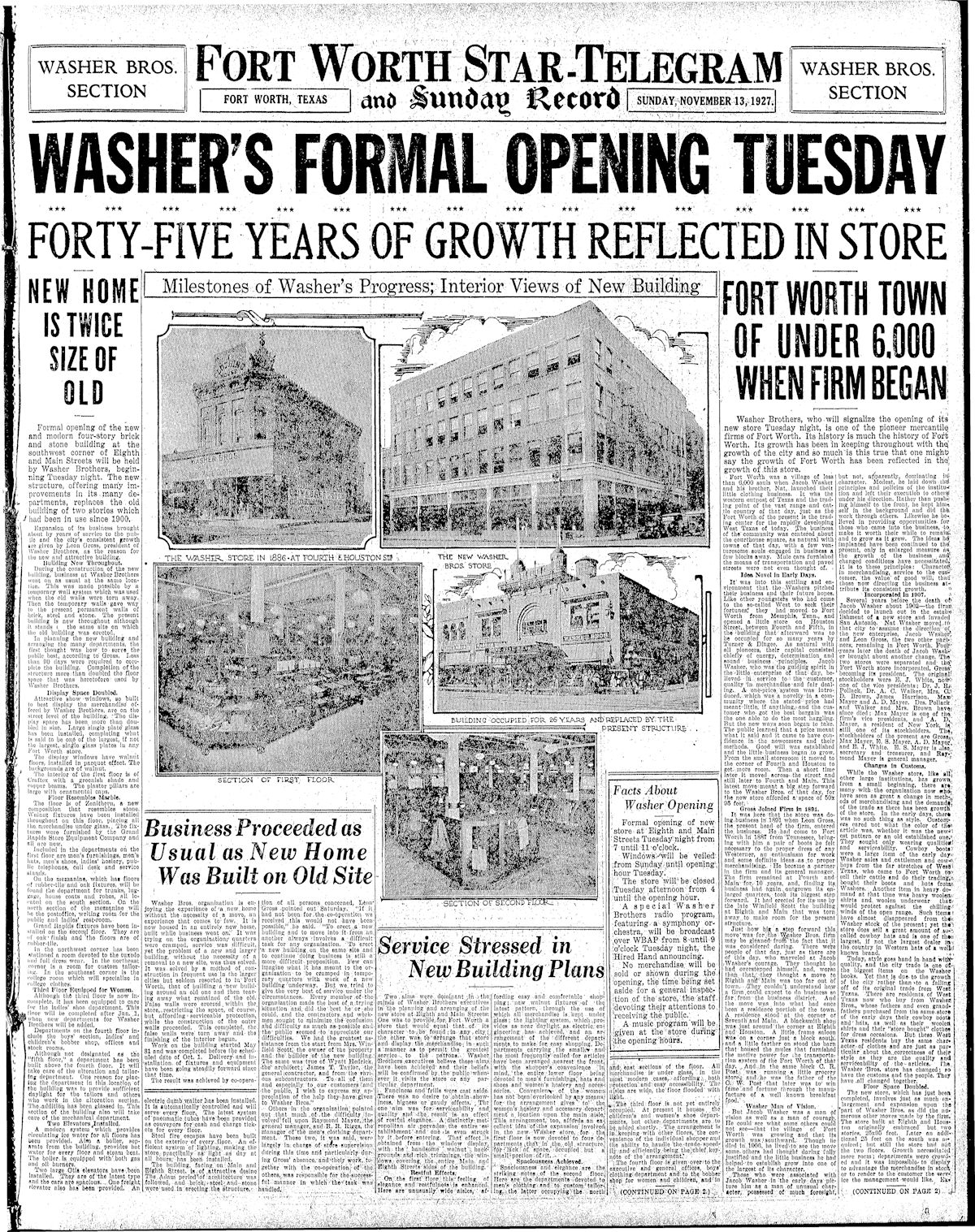
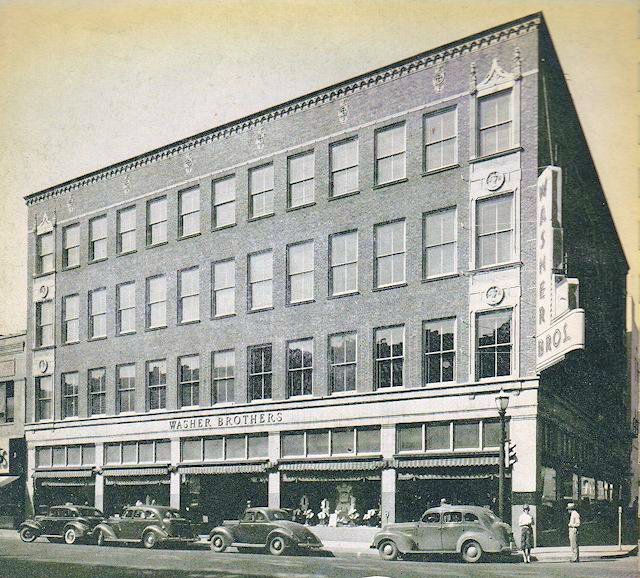 By 1927 Winfield Scott was dead, and his widow owned the Washer Brothers building. The store needed more space, so Mrs. Scott didn’t just expand the 1901 building—she replaced it on the lot even as the store continued to operate.
By 1927 Winfield Scott was dead, and his widow owned the Washer Brothers building. The store needed more space, so Mrs. Scott didn’t just expand the 1901 building—she replaced it on the lot even as the store continued to operate.
The store continued to operate as a new building was erected around the old one. False walls were erected around the store. Then new outer walls were erected. Then the false walls and original walls were torn down and the interior finished.
The four-story building of brick and stone was designed by Wyatt Hedrick.
Washer Brothers remained a men’s store, but the new store added hosiery and shoes for women.
For the grand opening WBAP radio broadcast a symphony orchestra concert emceed by the Hired Hand (Harold Hough).
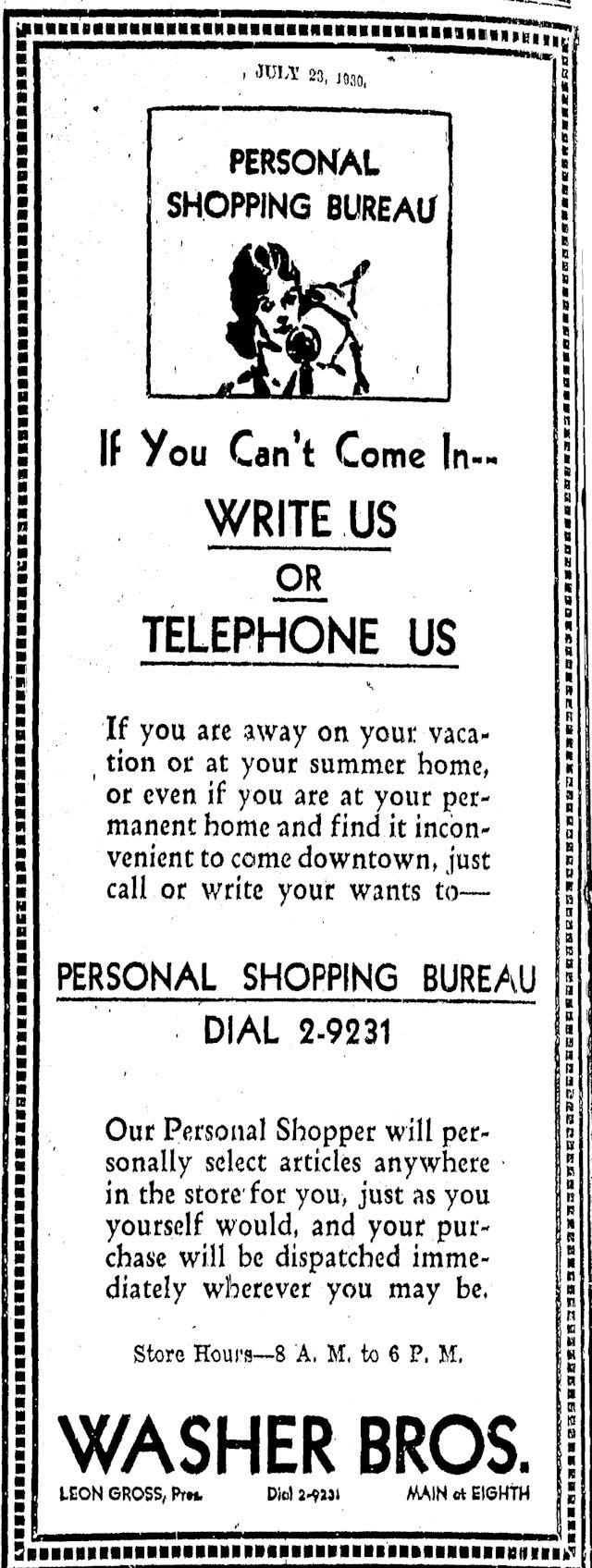 Washer Brothers, like most of the downtown department stores, offered customers the option of shopping by phone or mail via a “personal shopper.”
Washer Brothers, like most of the downtown department stores, offered customers the option of shopping by phone or mail via a “personal shopper.”
 In 1935 Nathan Washer died in San Antonio.
In 1935 Nathan Washer died in San Antonio.

An ad from 1945.

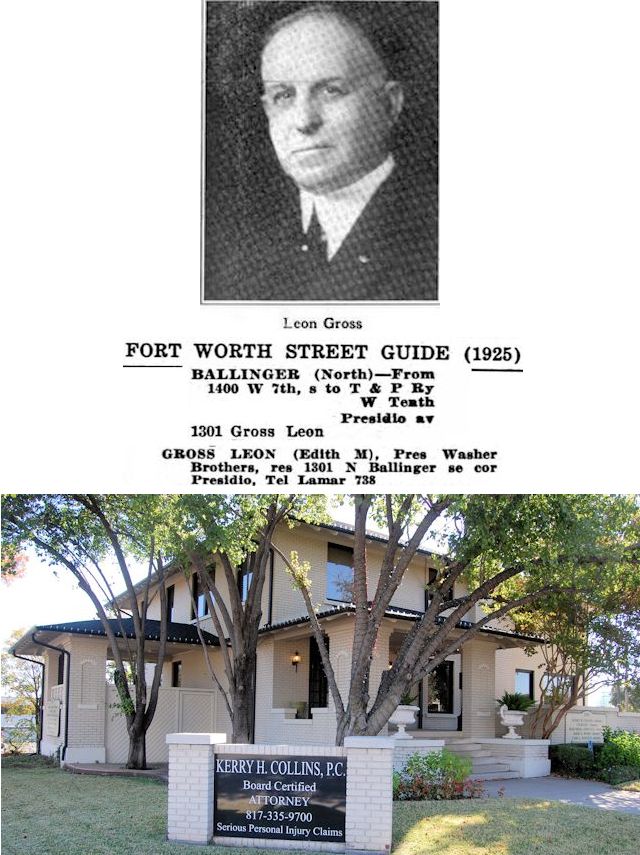 In 1945 store president Leon Gross died. Gross, like Jacob Washer, is buried in Emanuel Hebrew Rest Cemetery.
In 1945 store president Leon Gross died. Gross, like Jacob Washer, is buried in Emanuel Hebrew Rest Cemetery.
Leon Gross lived on Ballinger Street on Quality Hill.
Fast-forward to 1968. Everyone who had built the Washer business was dead, and the retail world was vastly changed. Stores that had survived for decades downtown added suburban branches. Family-owned stores were sold to outsiders. In 1968 Washer Brothers was bought by Hart Schaffner & Marx, which already owned the Dallas-based Jas. K. Wilson clothing stores.
Three years later Washer Brothers opened its first suburban store in Northeast Mall.
 In 1977 Hart Schaffner & Marx merged the Jas. K. Wilson and Washer Brothers stores as Jas. K. Wilson/Washer Bros. The Washer Brothers store in downtown Fort Worth was renamed, and a Jas. K. Wilson/Washer Bros. store was opened in Ridgmar Mall.
In 1977 Hart Schaffner & Marx merged the Jas. K. Wilson and Washer Brothers stores as Jas. K. Wilson/Washer Bros. The Washer Brothers store in downtown Fort Worth was renamed, and a Jas. K. Wilson/Washer Bros. store was opened in Ridgmar Mall.
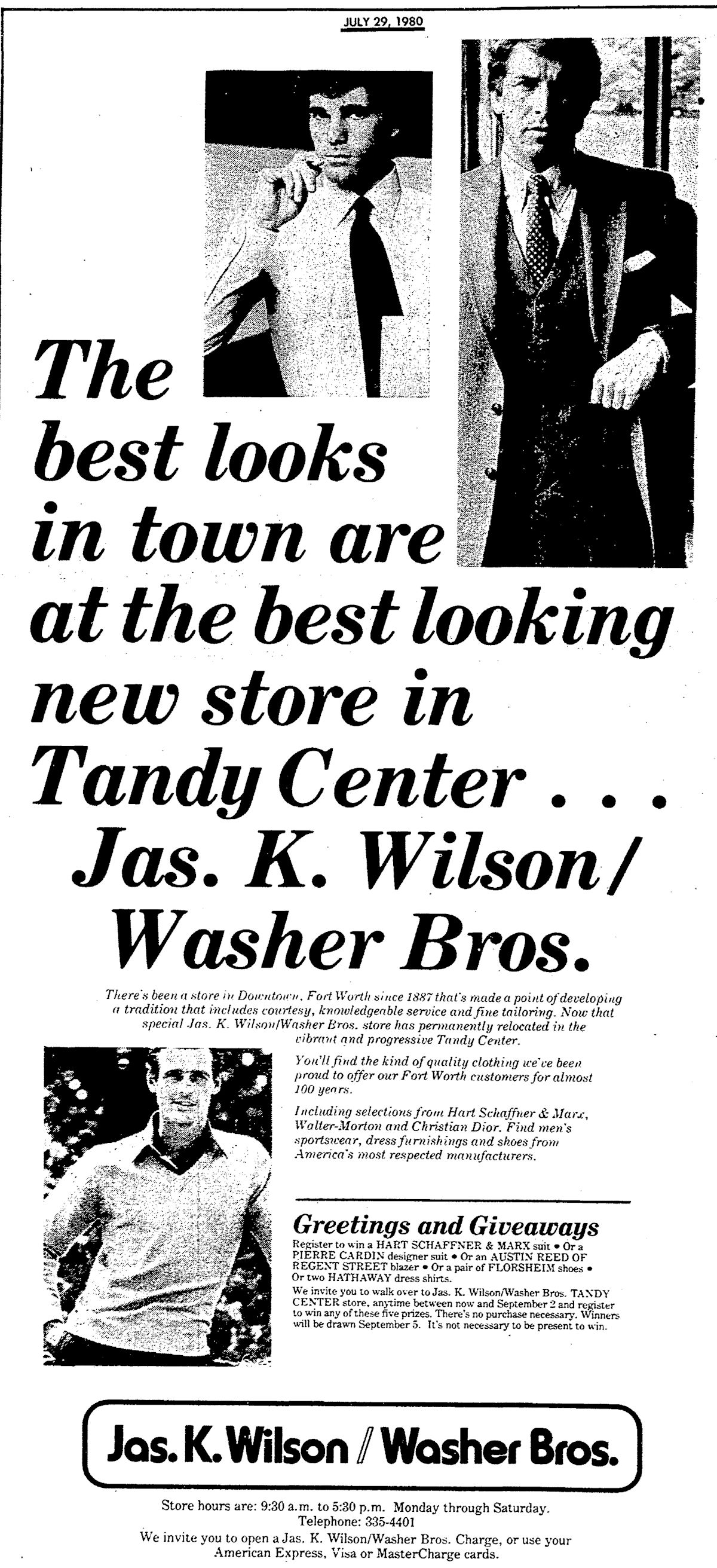
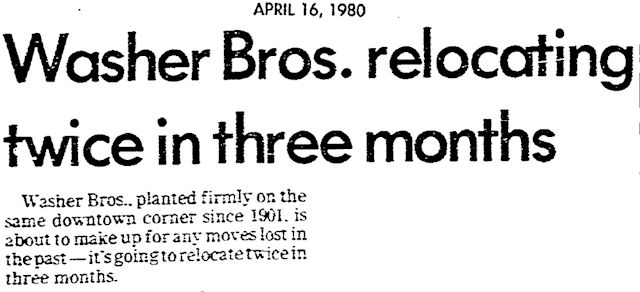 In 1980 the Washer Brothers store on Main at 8th, after being in the same location seventy-nine years, moved not once but twice: first to the Meacham Building temporarily and then into Tandy Center.
In 1980 the Washer Brothers store on Main at 8th, after being in the same location seventy-nine years, moved not once but twice: first to the Meacham Building temporarily and then into Tandy Center.
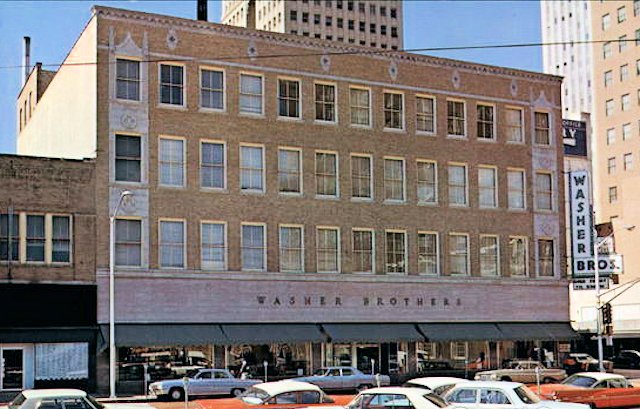
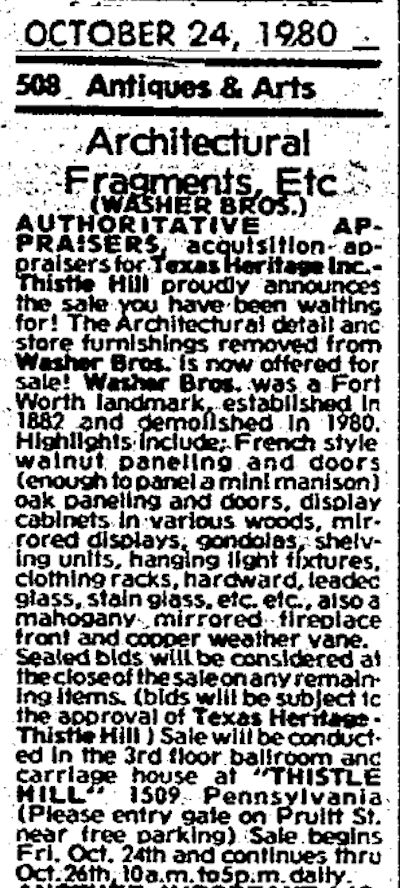 The 1927 building on Main at 8th was demolished to make way for General Worth Square at ground level and a parking garage below.
The 1927 building on Main at 8th was demolished to make way for General Worth Square at ground level and a parking garage below.
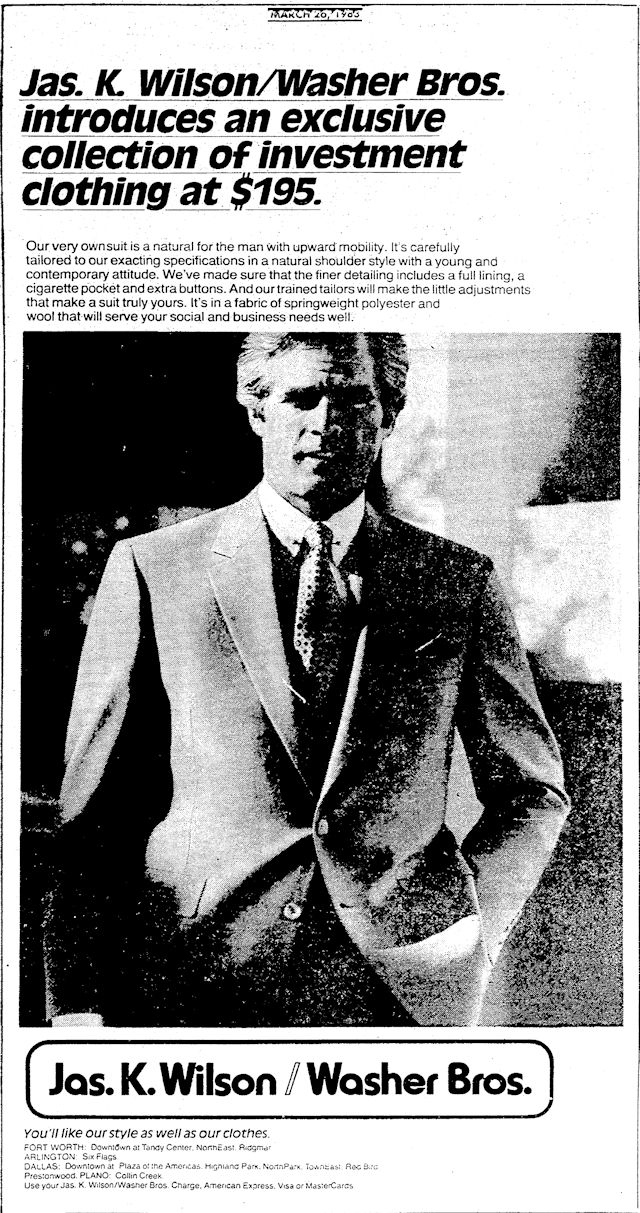 An ad from 1983.
An ad from 1983.
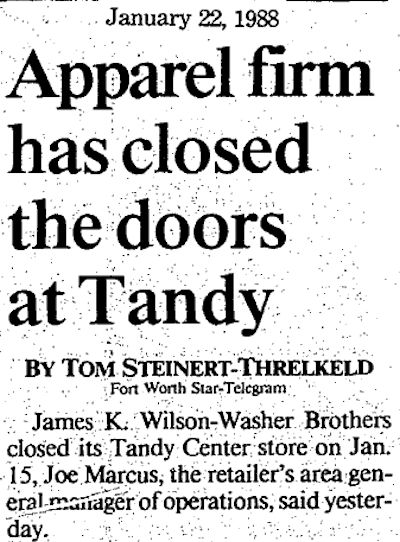 But the 1980s were not kind to men’s clothing stores. Several in Fort Worth closed, including Clyde Campbell in 1987.
But the 1980s were not kind to men’s clothing stores. Several in Fort Worth closed, including Clyde Campbell in 1987.
And in 1988 Jas. K. Wilson/Washer Bros. in Tandy Center closed. The company’s mall stores soon followed suit.
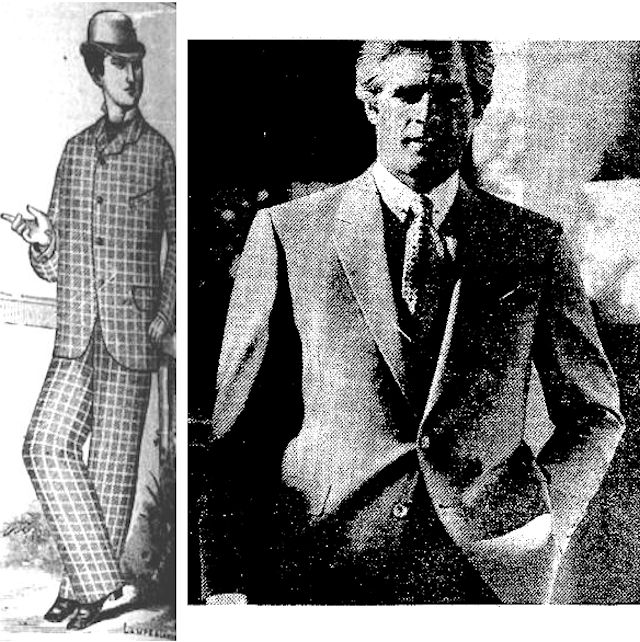
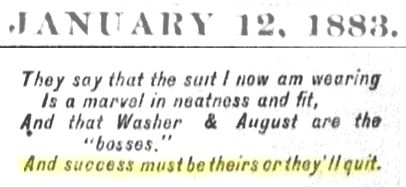 The Washer name had existed in Fort Worth retail since 1882—106 years. That’s a lot of success before the time came to quit.
The Washer name had existed in Fort Worth retail since 1882—106 years. That’s a lot of success before the time came to quit.






I worked in the Washer Brothers in Fort Worth in 1959-1960 while I was in high school. I ran an addressograph machine
Is Washer Brothers still open?
Closed in 1988. The link at the bottom of the post links to a list of the years in business of the major stores in Fort Worth.